History of the Utah Highway Patrol Shoulder Patch
The Utah Highway Patrol had its beginnings in 1923 when the legislature authorized the State Road Commission to employ persons to patrol the state’s highways. In 1926, two men were assigned to patrol the highways part time. Three full-time patrolmen were hired in 1928 and uniforms and sidearms were issued. The Highway Patrol was vested with full police powers in 1935 and in 1951 became part of the newly created Department of Public Safety.
Today the Patrol enforces traffic and criminal laws, provides assistance in case of emergency or disaster and participates in projects to ensure the public’s safety.
The beehive shoulder emblem was first worn in 1947, one hundred years after the first Mormon pioneers arrived in Utah. To the Mormons the beehive was a symbol of industry, organization and self-sufficiency. These same qualities are typical of the troopers who proudly wear the beehive insignia of the Utah Highway Patrol.
The History of the Utah Highway Patrol Motorcycle Unit
1923 The Utah State Legislature empowers the State Road Commission to patrol the highways of the State.1925 The highways are patrolled on a part-time basis by two state employees, designated as “patrolmen.” R. W. Groo, a civil engineer with the State Road Commission, is assigned to supervise and organize the patrols. The organization is known as the “State Road Police Patrol.”1926 The State Road Commission adopts a regulation requiring traffic to stop before entering an arterial highway. The first arterial highway is designated from Ninth South Street, in Salt Lake City to Fifth North Street in Provo. One patrolman is moved to full time status to enforce this new regulation.1927 A second part-time patrolman is moved to full time status.1928 Three additional full-time patrolman are hired. Uniforms and badges, are issued. The first uniform is forest green with a patch of a flying motorcycle wheel sewn on the left arm and on the hat. Smith & Wesson .44 caliber revolvers, with cross-draw holsters, are issued to patrolmen.1929 The annual operating budget of the patrol is $11,743.06.1930 The first portable checking station is created. It is a converted trailer.1931 The first of four sections of the “Uniform Act Regulating Traffic on Highways” become Utah law. Patrolman George E. “Ed” VanWagenen becomes the first Utah Patrolman killed in the line of duty, May 23, 1931.1932 The first permanent checking station is established on State Road 91 at Santa Clara. The uniform color is changed to navy blue.1933 The organization is redesignated as the “Utah Highway Patrol.” The ranks of superintendent, captain, lieutenant, and sergeant are established.1934 The first driver license law becomes effective and the UHP is given responsibility for testing applicants. The Patrol has 30 sworn officers as of July 1, 1934.1935 The 1935 State Legislature empowers the Utah Highway Patrol with statewide police powers. The Vehicle Safety Inspection Program is initiated. The annual operating budget of the UHP exceeds $100,000. The campaign hat is implemented.1938 The duty weapon is changed to a .357 magnum revolver. Smith & Wesson revolvers are issued with 6 inch barrels. Winchester, Model 97, 12 gauge shotguns are also issued.1939 A bill to create a “Utah Police School” in connection with the University of Utah, fails to pass the legislature. The Utah Highway Patrol coordinates a two week school, open to all peace officers in Utah, at Pinecrest Inn in Emigration Canyon. The Santa Clara checking station is closed. Responsibility for driver license testing is moved to the State Tax Commission.1940 The Utah Highway Patrol has 51 sworn officers. The department purchases three, .45 caliber Thompson sub-machine guns.1941 The Utah Highway Patrol becomes a separate department under the direction of the Governor. The largest hiring to date raises the ranks of the UHP to 69 officers.1942 Three hundred fifty civilian volunteers are designated as “Deputy Highway Patrolman” for protection of government property at strategic locations during World War II. All sergeants are advanced to the rank of lieutenant. The rank of sergeant is eliminated until 1949. The Utah Highway Patrol activates its first dispatch station. A few select patrol cars can receive only. UHP patrol cars are painted many colors instead of the traditional uniform black.1943 The UHP begins enforcement of the “War Speed Limit” of 35 mph.1944 The Utah Highway Patrol establishes two-way communications with patrol cars in Salt Lake County only.1945 The Utah Highway Patrol Civil Service Act of 1945, created the Utah Highway Patrol Civil Service Commission. All patrolmen were ordered to work 10 hours a day, six days a week. A few black and white patrol cars are implemented for better visibility in an attempt to reduce traffic accidents. Motorcycles are phased out.1946 The UHP adopts a new gold six-point badge with the seal of the Territory of Utah in the center.1947 The beehive becomes the official emblem of the UHP and is placed on the doors of patrol cars and at UHP offices throughout the state. A cocoa brown uniform shirt with cross draw holster and black tie is adopted. The UHP Civil Service Commission announces that effective October 1, 1947, all first class patrolmen will be designated as “Troopers.” Officers still in their first year of service will continue to be called Patrolmen.1948 The cross-draw holster is phased out and duty weapons are shortened to 4 inch barrels. The uniform tie is changed to match the uniform “pink” trousers.1949 Utah’s DUI law establishes a presumptive level of intoxication at .15 percent BAC. All new patrol cars are painted black and white. In additon cars are equipped with a rotating red light for greater visibility.1950 The UHP implements the “Red Cross on the Highway” program. All troopers complete advanced Red Cross first aid training. UHP begins blood shuttles. The UHP purchases the first “walkie-talkie” radio. The Patrol responds to Carbon County to maintain peace during a coal strike.1951 or earlier The Ute Rangers become the official mounted posse of the Utah Highway Patrol.1951 The Utah Highway Patrol celebrates 25 years since the first full-time patrolman was hired. The Department of Public Safety is created and the Utah Highway Patrol becomes a division of this new department. The Utah Highway Patrol responds to a major riot at the Utah State Prison. The UHP is given command over the prison by Governor Lee. A 10-man riot squad is established by the UHP. Colonel Dudler orders all troopers to work 10 hours per day, seven days a week in an effort to halt the increasing highway death toll. A radio communication network is completed, linking Salt Lake, Price, Moab, Vernal, and Richfield. A special session of the legislature calls for building and operating 10 ports of entry. UHP troopers are to man these stations.1952 The UHP responds to Indian uprisings in San Juan County. The UHP begins opening port of entry stations through out Utah. Field personnel are required to staff these ports.1953 Several unmarked patrol cars are added to the fleet of black and white units. A roving patrol of five troopers is implemented. Port of entry personnel are hired and issued uniforms with light blue shirts. The shoulder patch is the shape of a shield with a beehive in the center and the words “Checking Station” on top.1955 The Utah Highway Patrol begins using radar. The UHP now has eight port of entry stations that operate 24 hours a day. Two portable scale units are in operation. The campaign or “smokey” hat is phased out.1956 Administration authorizes short sleeve uniform shirts without a tie, for summer use only.1957 The UHP responds to another riot at the Utah State Prison. The UHP implements the “damage release sticker” program. Utah adopts the “Implied Consent Law.”1959 Port of entry and dispatch employees became sworn peace officers. The shoulder patch for port of entry personnel is changed to the UHP beehive with the word “Weighman” on the bottom. Supervisors at the ports of entry are designated as corporals. Corporal’s shoulder patch includes the words “Checking Station Division” directly below the beehive. The shoulder patch for dispatch personnel is the UHP beehive with green lettering plus the word “Radio” and a green lightning bolt on the lower portion of the beehive. The Utah Highway Patrol Academy is established at Camp Williams to train police officers around the State. The UHP implements “military courtesy” within the ranks. A dress blouse is again adopted. Trooper Armond A. “Monty” Luke is killed on December 2, 1959.1960 The first sections of interstate are opened. The Utah Legislature empowers the DPS with authority to set guidelines for alcohol testing. Trooper George Dee Rees is killed on July 2, 1960.1961 The Utah Highway Patrol purchases its first aircraft, a single-engine, four-seat Piper Comanche. The UHP headquarters moves from the State Capitol into the new State Office Building directly behind the Capitol.1964 The “Utah Law Enforcement Teletype Network” is established, linking all dispatch centers in Utah and within the continental United States.1965 The Utah Highway Patrol provides security for the Governor. All troopers receive riot control training and are issued a riot helmet.1966 Weighmen and dispatchers are designated as troopers and receive basic training in weapons, report writing, and accident investigation at Camp Williams.1967 Senate Bill 66, an act providing for the training of peace officers and the establishment of a training academy, is signed into law by Governor Rampton. Utah law reduces the presumptive level of driving under the influence to .08 percent BAC, the lowest in the nation.1968 Utah is connected to the “National Criminal Information Center” (NCIC.) UHP cars are equipped with the first electronic sirens.1970 The Utah Highway Patrol participates with other police agencies in the Alcohol Safety Action Program (ASAP). Patrol cars are equipped with push bumpers, air conditioning, and AM radios.1971 The Utah Highway Patrol responds to a coal mine strike in Carbon County. Trooper John R. Winn is killed on September 22, 1971.1973 The UHP establishes the Beehive Award Program to stimulate the recovery of stolen vehicles and the apprehension of suspects. Moving radar is used for the first time by UHP troopers.1974 The Utah Highway Patrol started to enforce the 55 mph national speed limit.Trooper William J. Antoniewicz is killed, December 8, 1974.1975 The campaign hat is again implemented and the “bus driver” cap is discontinued. All field troopers complete a 40 hour Crash Injury Management Course.1976 Agent Robert B. Hutchings, while serving with the Narcotics and Liquor Law Enforcement Division, is killed on July 20, 1976.1977 The Patrol hires the first female trooper, Marci McGregor. The campaign hat color is changed to chocolate brown and a tan straw hat is also adopted for summer use. The Utah Highway Patrol responds to a major coal mine strike in Carbon County.1978 For the next two years, troopers are phased out of dispatch and replaced with civilian employees. CB radios are installed in patrol cars. The UHP joins the Combined Accident Reduction Effort, (Operation C.A.R.E.), a cooperative interstate traffic safety effort during high-traffic holiday weekends. The UHP implements physical fitness training during inservice training. Trooper Ray Lynn Pierson is killed on November 7, 1978.1979 The UHP implements a radar certification program. The Accident Reconstruction Team (ART) is implemented.1980 The Utah Police Academy (POST) is finally built. The Utah Highway Patrol also moves into new offices near the police academy.1981 Troopers are allowed to grow mustaches. The UHP once again implements a motorcycle squad. With Kawasaki’s1982 The Utah Highway Patrol is selected as the best dressed police organization in the United States. DPS creates the Medal of Valor to recognize people who risk their life to save the life of another. DPS implements “career mobility,” allowing troopers to serve in all divisions within the department. Trooper Daniel W. Harris is killed on August 25, 1982.1983 The Patrol responds to several natural disasters including the Thistle mud slide. The UHP presents the first “Seat Belt Survivor Award.” Utah and Arizona open the nation’s first joint-state Port of Entry.1984 Trooper Karla Conway becomes the first UHP trooper to give birth. The UHP is presented a special “United States Senate Award for Achievement,” for their efforts in establishing the combined Utah/Arizona port of entry.1985 Trooper Kathy Slagowski and Sergeant Doug Slagowski become the first husband and wife members of the UHP, married on January 11, 1985. Senate Bill 253, sponsored by Senator Richard J. Carling, establishes special license plates for UHP vehicles, complete with UHP beehive and trooper’s badge number. The Utah Highway Patrol celebrates 50 years as an agency with full police authority. The Utah Highway Patrol purchases Ford Mustang pursuit vehicles. UHP training includes emergency vehicle operation. The UHP obtains its first electronic officer, Trooper Tron.1986 The UHP begins enforcement of a new seat belt law. “Operation Pipeline,” criminal interdiction through traffic law enforcement, begins in Utah. The Utah Highway Patrol replaces the Smith & Wesson, model 27, .357 magnum revolver with the Heckler & Koch, P7 M13, 9mm semi-automatic pistol.
1987 The Utah Legislature directs the UHP to eliminate troopers from the Ports of Entry. Troopers are replaced by special function officers. The Utah Highway Patrol trains all personnel in criminal interdiction tactics. The “Arrive Alive” program is implemented. The national speed limit is amended to 65 mph on rural freeways.1988 The Utah Department of Public Safety responds to Marion, Utah, in what becomes the longest siege to date in FBI history. The UHP relic car, a 1950 Ford, is added to the fleet. DPS creates the Special Emergency Response Team (SERT). The UHP Honor Guard is organized. The Aero Bureau adds a TH-55 training helicopter to its fleet.1989 A dike at Quail Creek Reservoir breaks causing extensive damage in Washington County. UHP troopers are issued soft body armor and other equipment from seized drug money. DPS implements the Automated Fingerprint Identification System (AFIS). Members of the Utah Division of Investigation (UDI) and SERT join forces with the Utah National Guard during “Operation Greenleaf,” a marijuana eradication program in southeastern Utah. The first Utah commercial driver licenses (CDL) are issued.1990 Reorganization of the port of entries transfers responsibility from the Utah Highway Patrol to the Department of Transportation. The UHP issues Heckler & Koch, MP 5, sub-machine guns to 18 field personnel.The Truckers and Troopers (T n T) program is implemented.1991 The Department of Public Safety purchases two Hughes OH 6 “Cayuse” observation helicopters and opens the Emergency Vehicle Operations Training Center in Utah County. Kathy Slagowski becomes the first female sergeant, promoted on August 14, 1991.1992 Trooper Joseph S. “Joey” Brumett is killed on December 11, 1992. The UHP Breath Alcohol Testing Program places the Breath Analyzing Testing Mobile Unit (BAT- mobile) into operation. The Utah Highway Patrol purchases 22 Chevrolet Camaro pursuit vehicles as part of a test program.1993 Trooper Dennis L. “Dee” Lund is killed on June 16, 1993. The UHP adopts six values representing the six points of the badge. These values are integrity, service, knowledge, professionalism, teamwork, and courage.1994 Sergeant Doyle R. Thorne, Aero Bureau helicopter pilot, is killed on July 30, 1994. The Utah Highway Patrol implements a DUI squad, patterned after the “ASAP” crews of the 1970s. The Civil Disorders Unit is organized. Public Information and Education programs are implemented in each section of the Utah Highway Patrol. Trooper Randy K. Ingram is killed on October 5, 1994. The department issues “O. C.” (oleoresin capsicum solution) spray to sworn officers.1995 The department adopts a centennial badge to be worn during 1996 only. The state of Utah receives the bid for the 2002 Winter Olympics. The UHP issues 250 M-14 military surplus rifles to field troopers and sergeants.1996 Utah celebrates 100 years as a State.(revised 10-27-95)
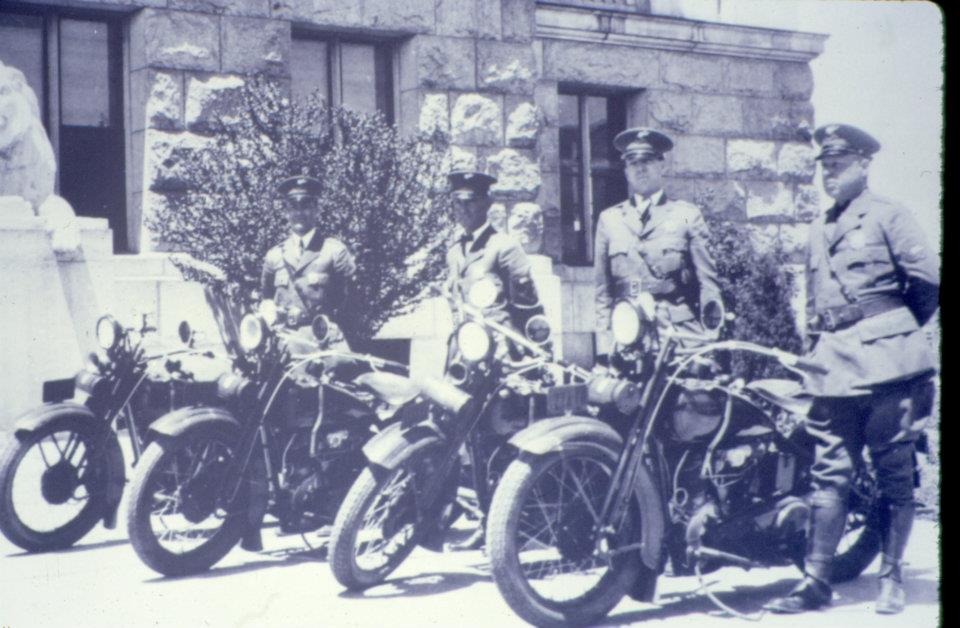
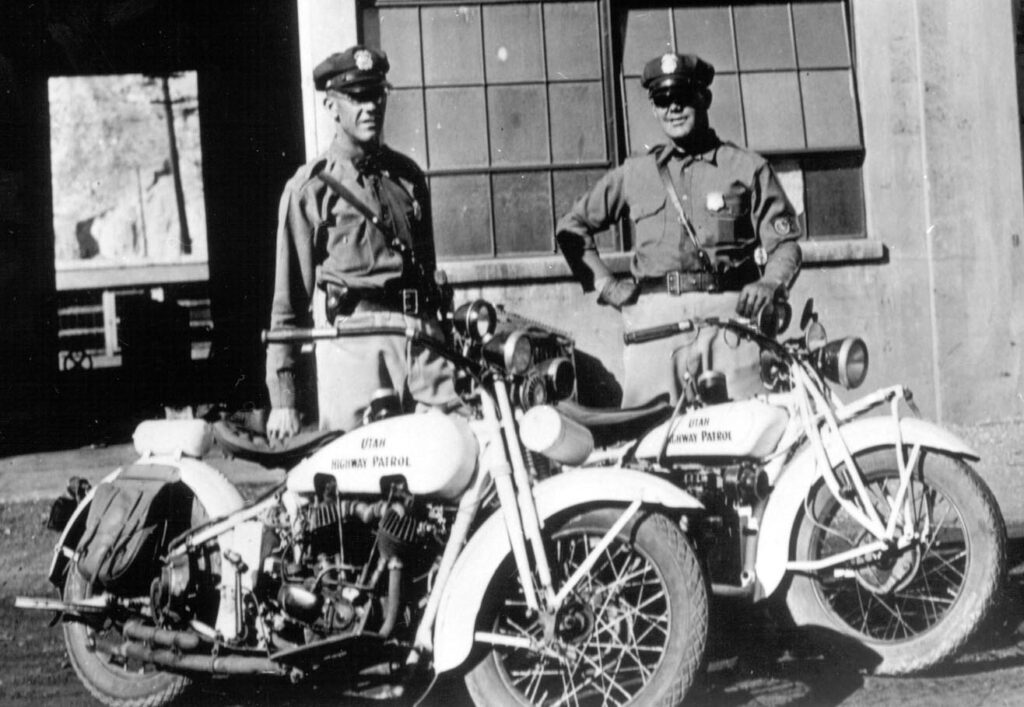

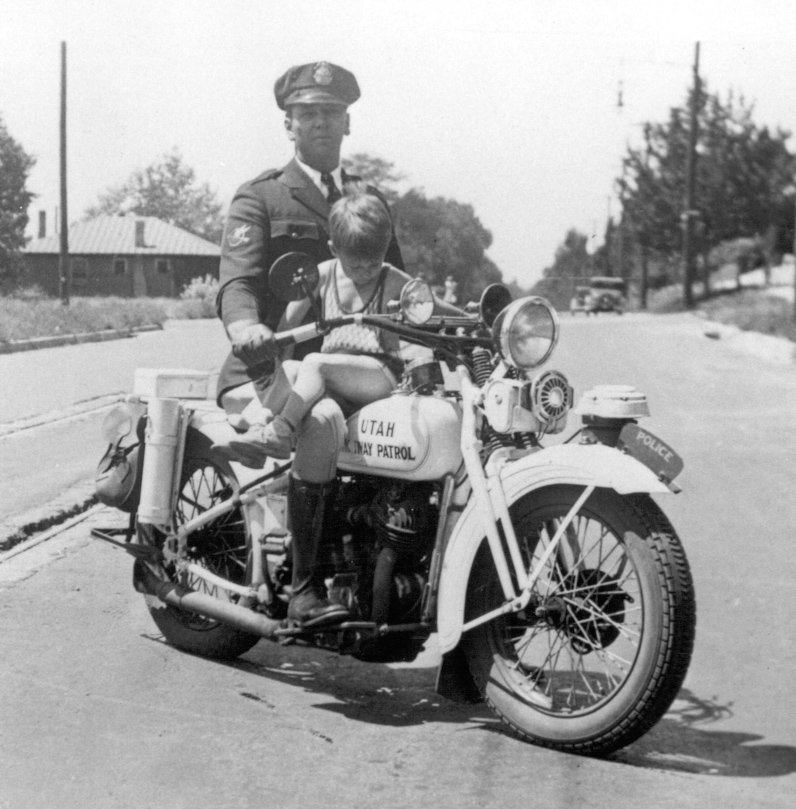
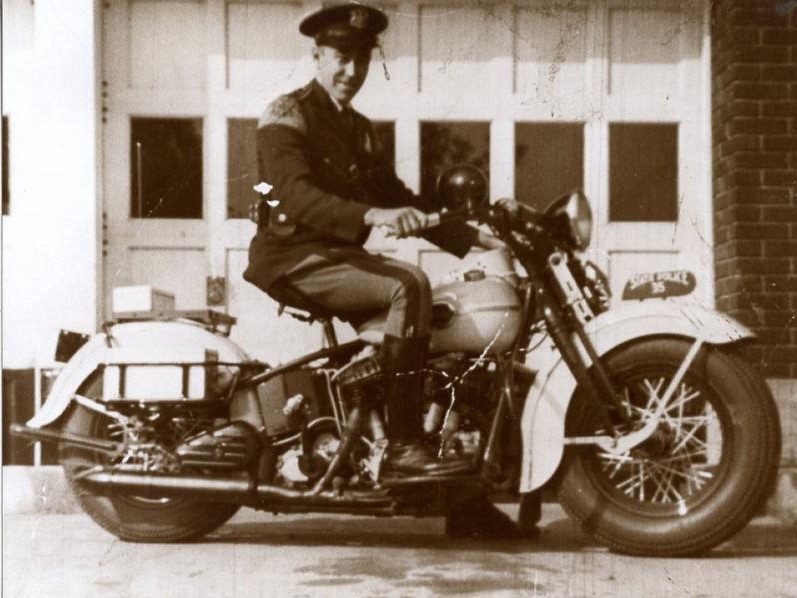

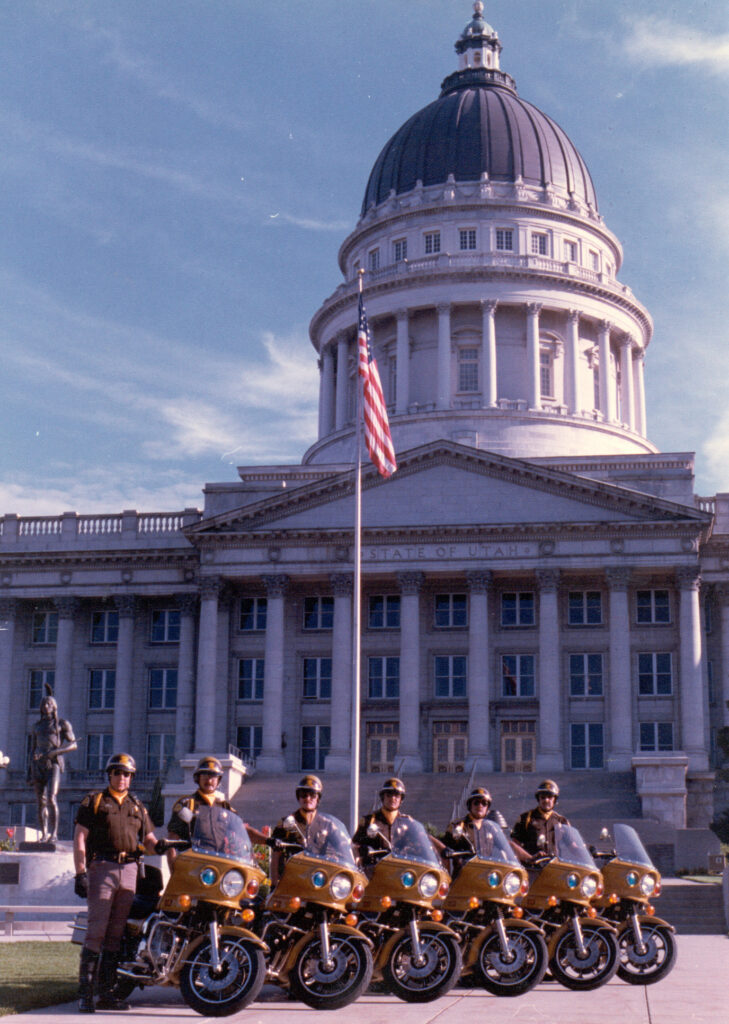
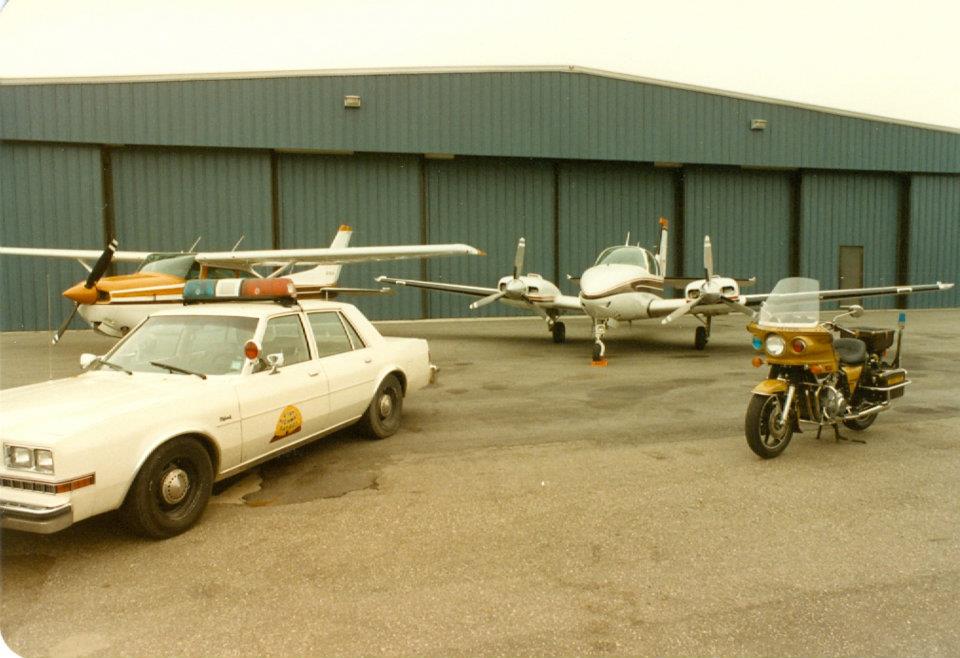

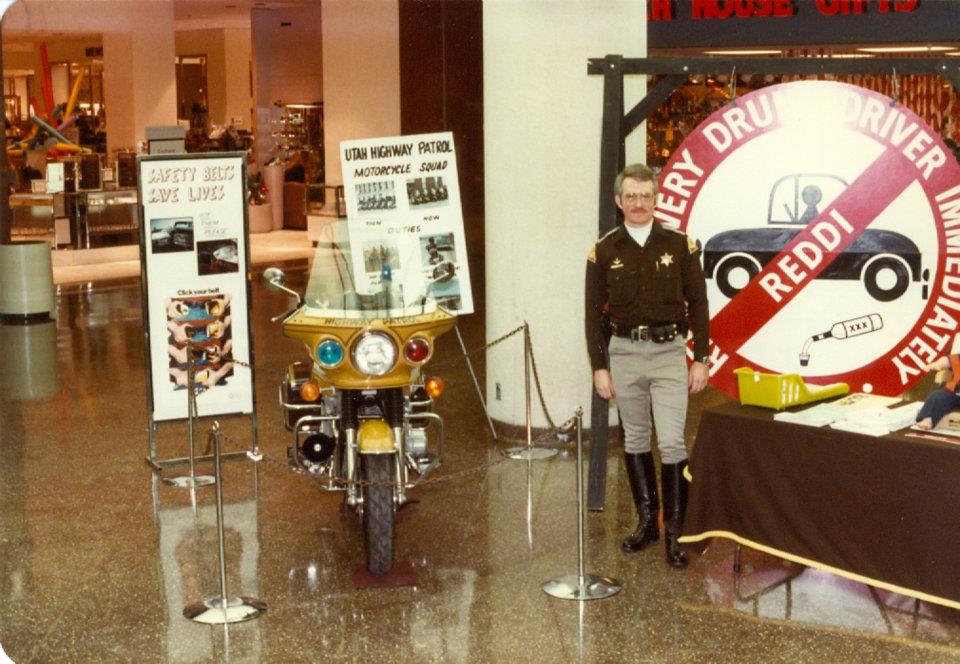

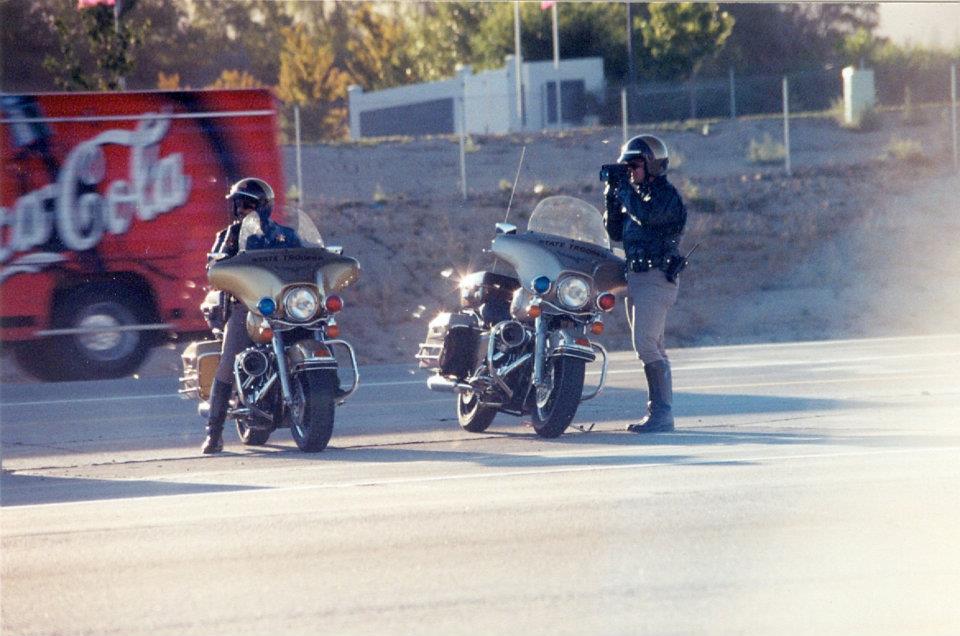

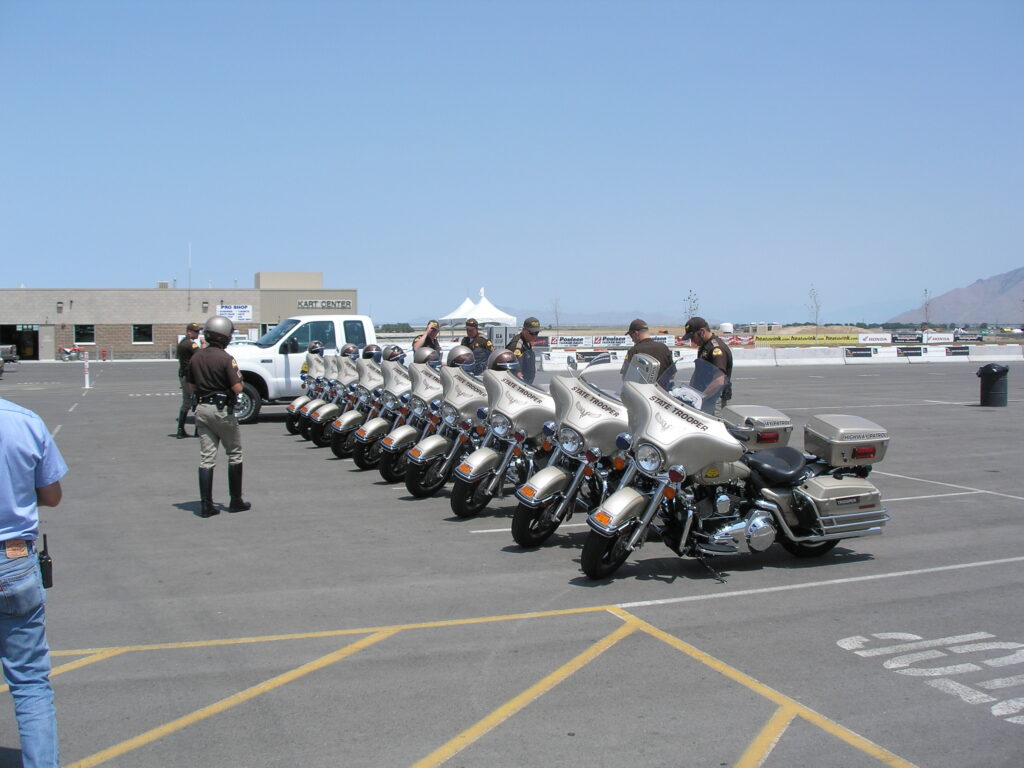
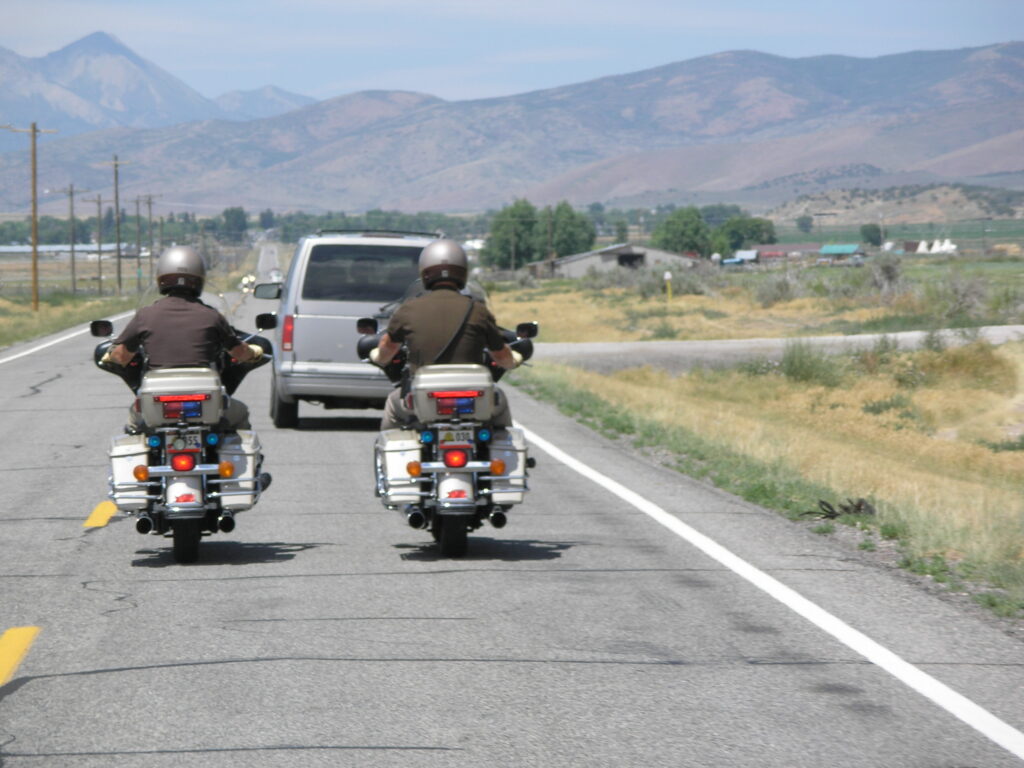
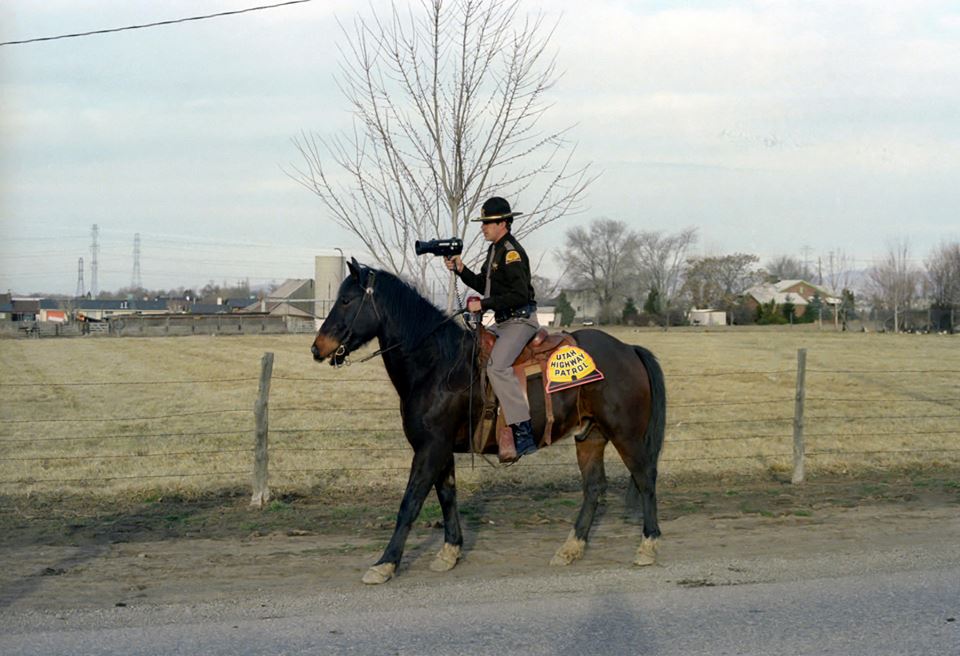
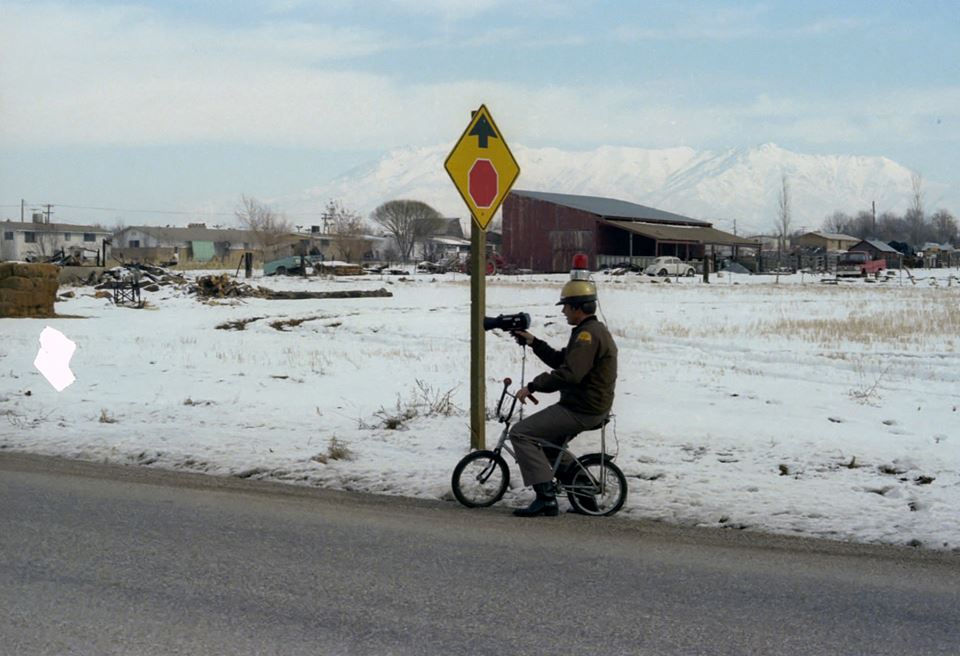
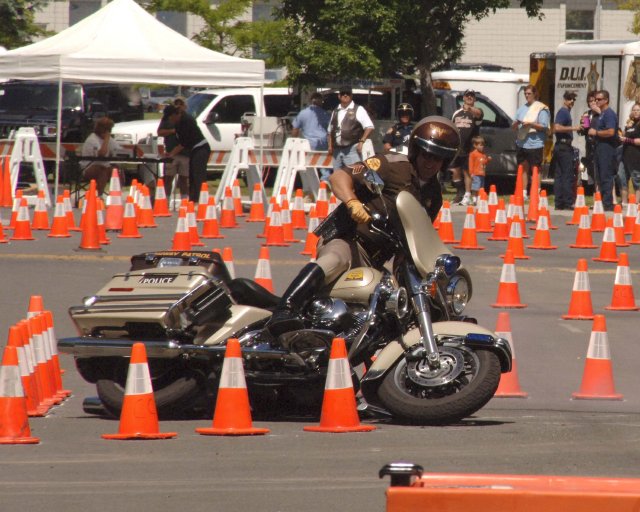


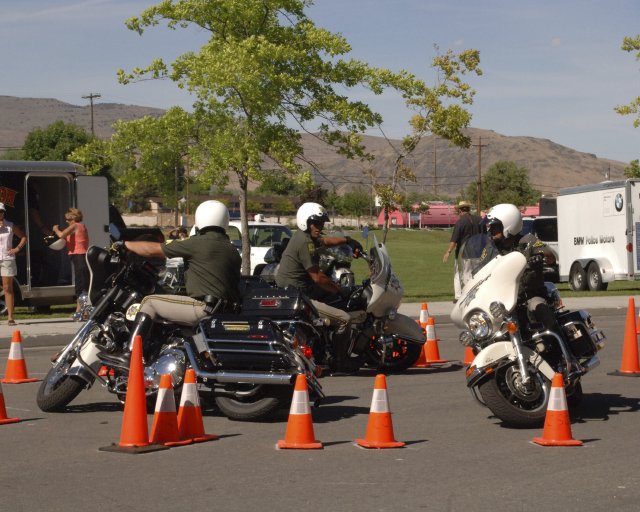
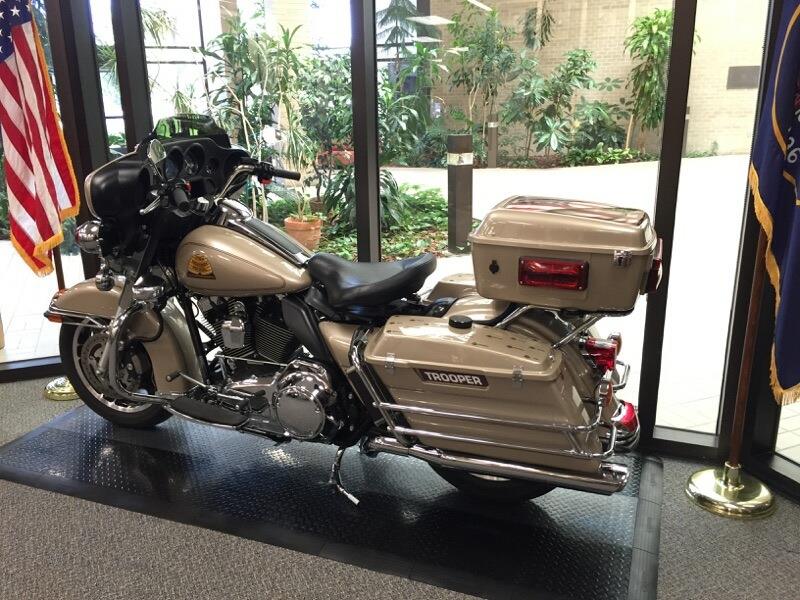
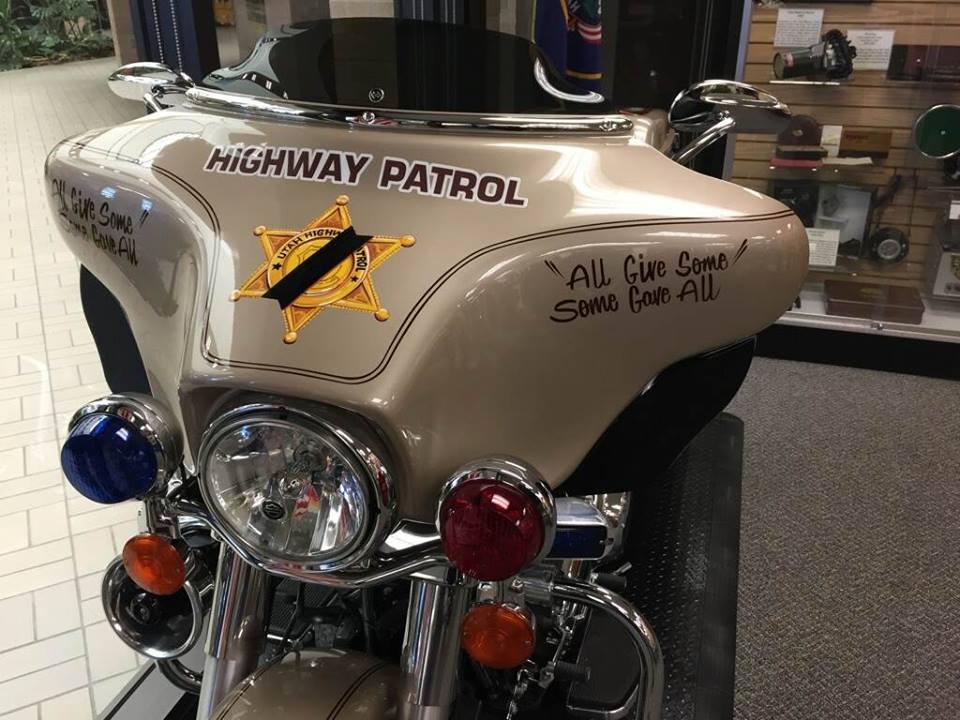
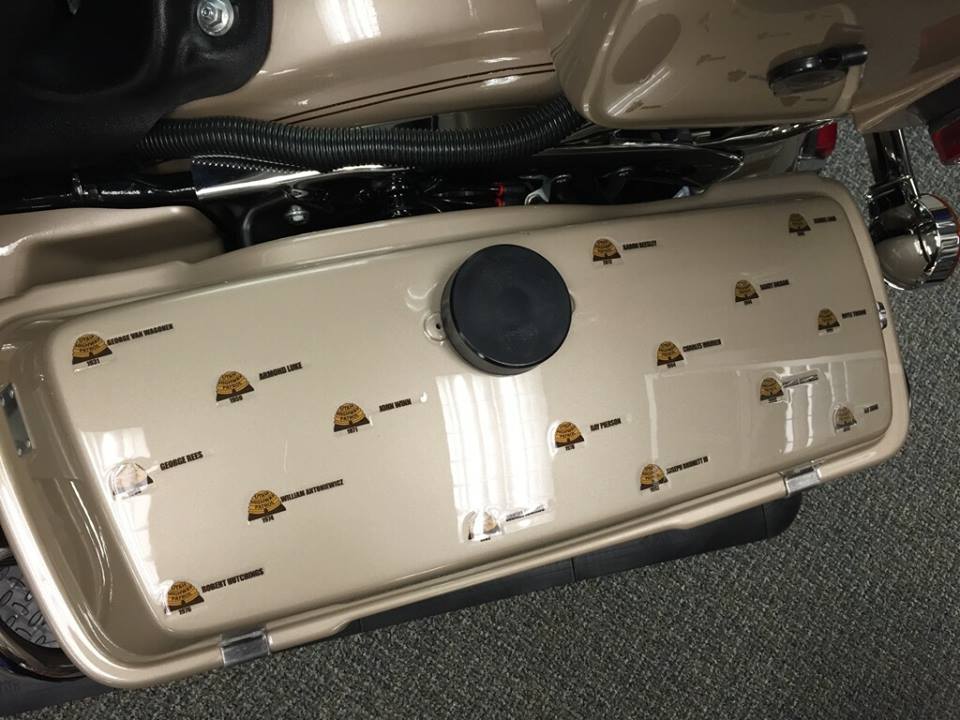
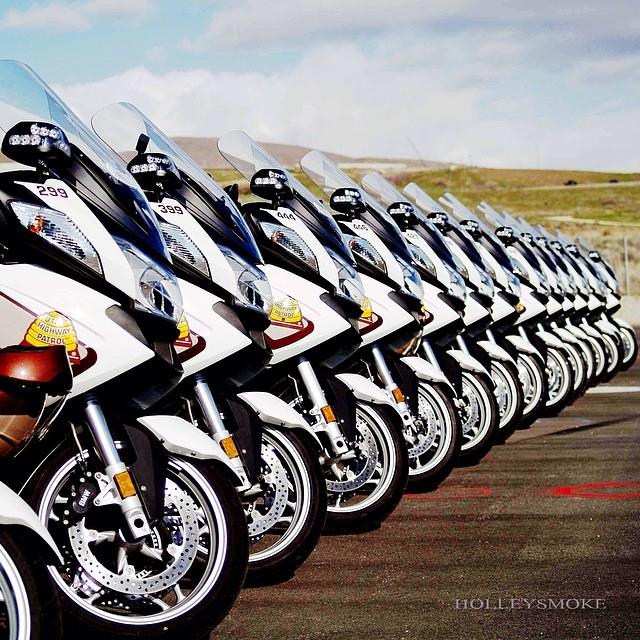

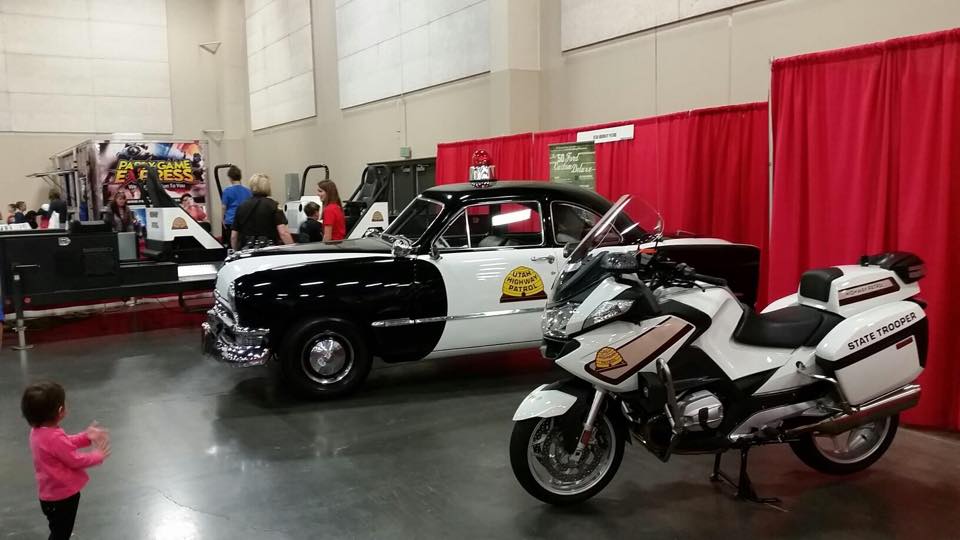
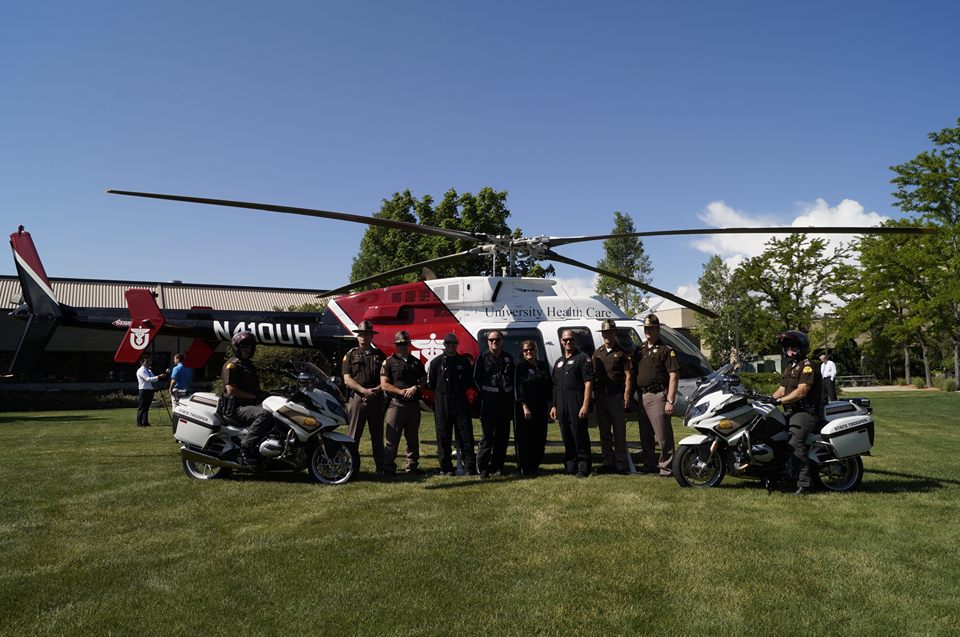


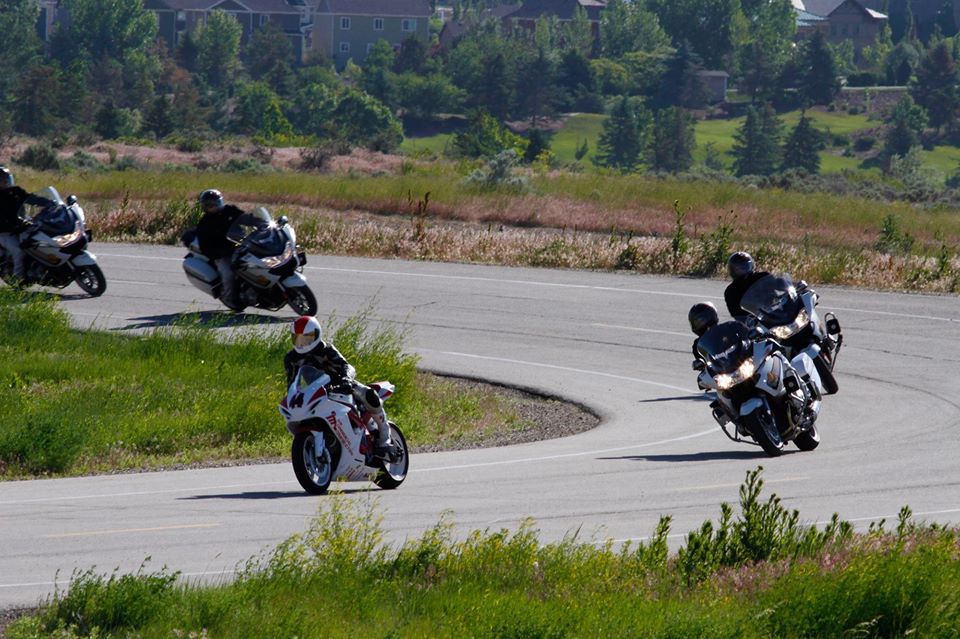



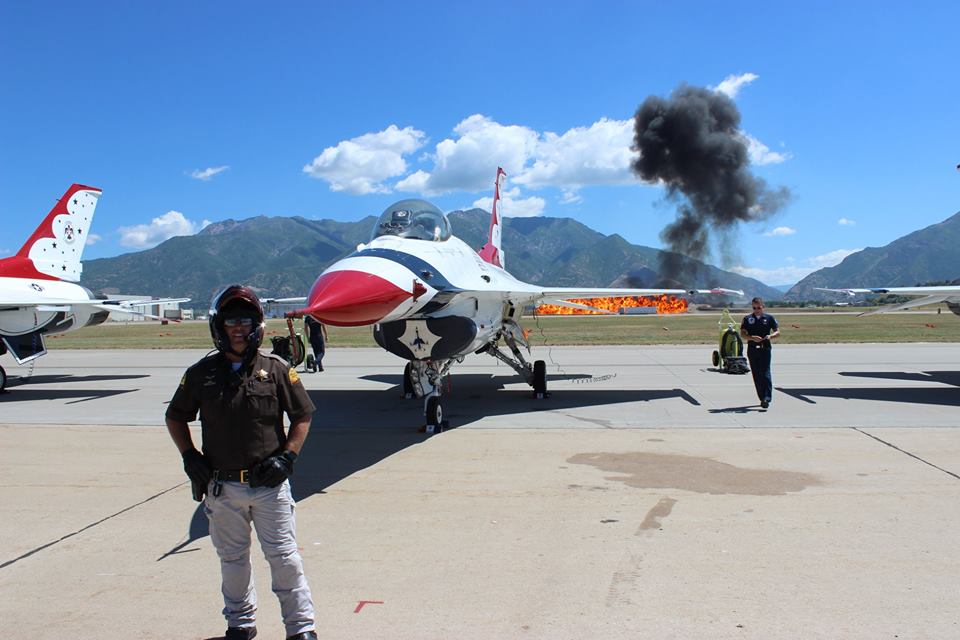
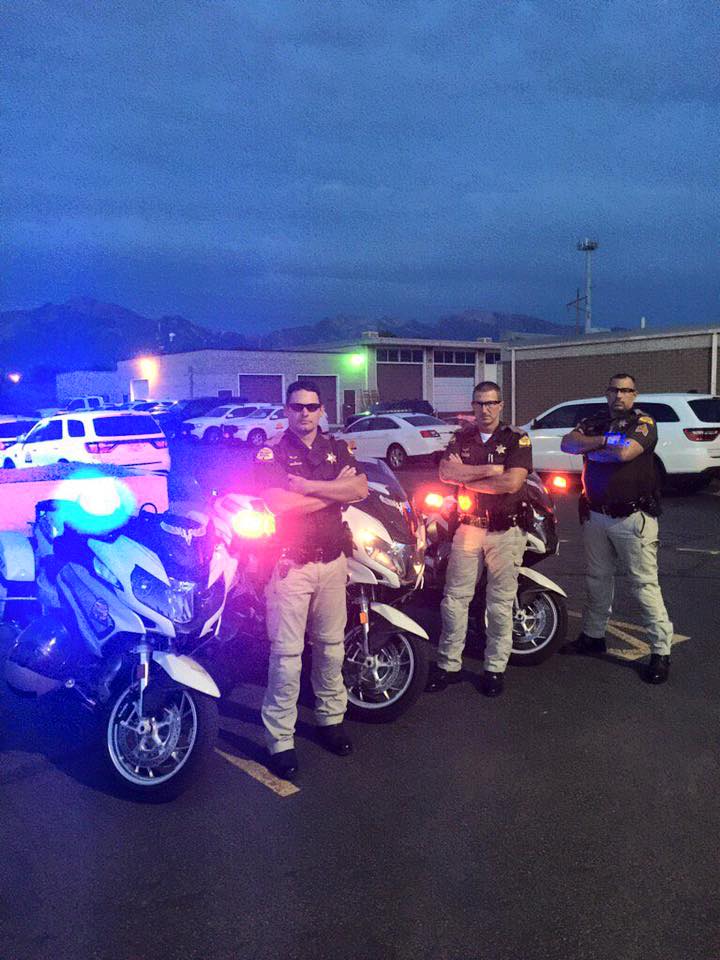

Information and Photos provided by the Utah Highway Patrol
